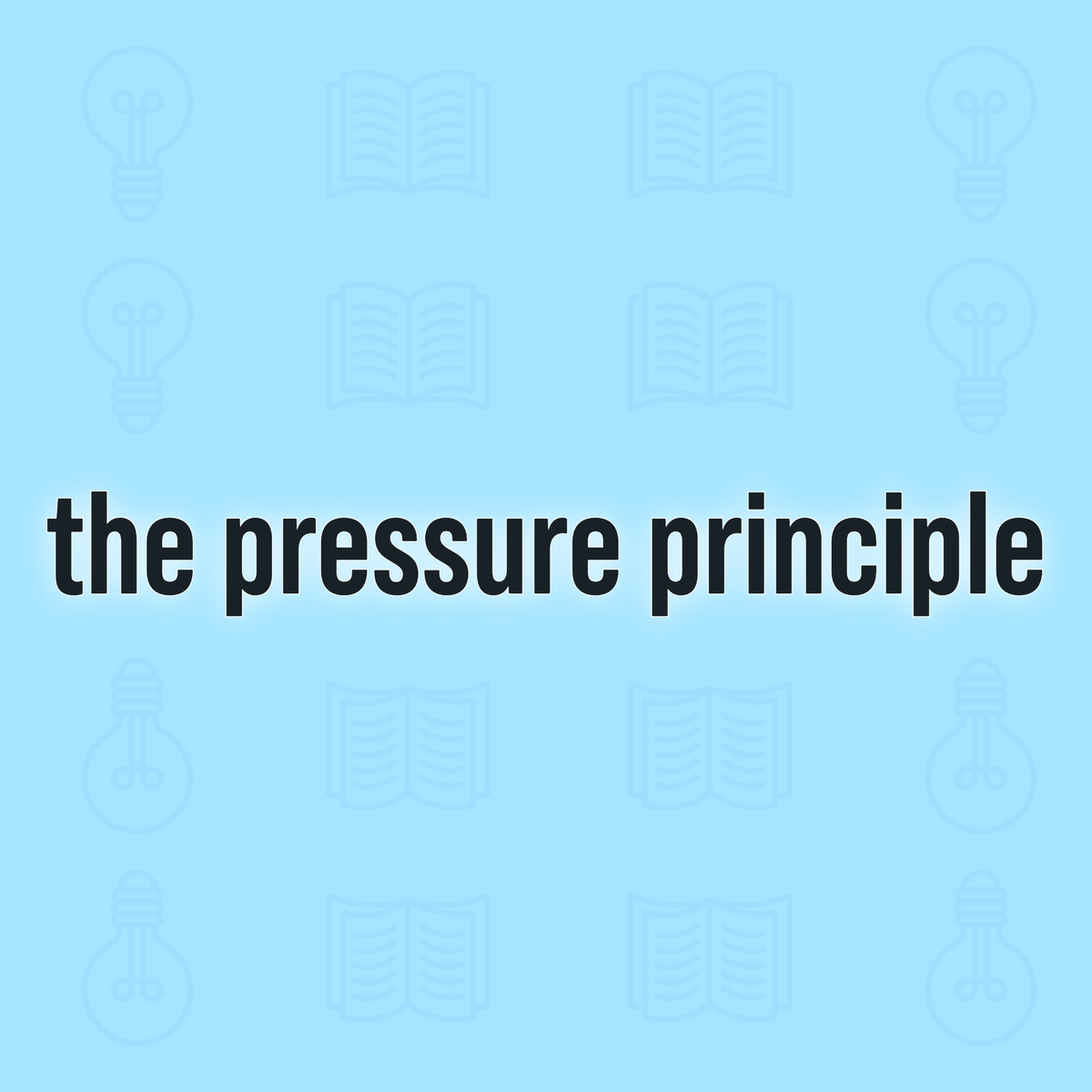How The Pressure Principle Changed My Life

Pressure can become a feeling that we run from to avoid discomfort and perceived embarrassment. At the same time, pressure is an experience which can help us grow and develop ourselves.
So, how can we navigate a situation which we fear, but can also have a positive effect?
The answer is to find the tools that anyone can use to handle pressure situations successfully.
Today, I want to share how reading “The Pressure Principle” by Dr Dave Alred changed my approach to pressure. Alred’s book cites eight strands of the Pressure Principle, and I want to talk about five strands and their techniques that have changed my life over the last eight years, since I first read this book.
🎯What is Pressure?
In "The Pressure Principle", Alred defines Pressure as:
"The interference with the ability to concentrate on a process, consciously or subconsciously, causing deterioration in technique and decreasing the level of performance."
The term pressure is widely discussed in the sports arena, and there are some expressions to describe this experience, such as ‘performance anxiety’ and ‘choking’, which are commonly used.
Pressure can take hold in any area of our lives, and these five strands are areas I have consistently visited to face pressure with greater confidence.
5️⃣Five Strands of The Pressure Principle
Anxiety
Generally, anxiety is accepted as the perception of a threat, which creates tension in the body, and can lead to distraction, which can be off-putting.
Two practical steps which helped me face anxiety under pressure were:
- Adopt “Command Posture”: To create physical confidence, adopt a command posture, with shoulders down and packed, as well as keeping the neck stretched and the chin in line with the sternum.
- “The Dentist Effect”: Exaggerate the actions that cause you anxiety when the pressure is on. When it comes to completing the action under pressure, you have the confidence beyond the required standards.
Language
A major realisation I gained from "The Pressure Principle" was the effect language can have on our ability to perform under pressure.
Reframing sentences to reflect the positive aspects of the situation, rather than the negative, which may bring on anxiety. Too often, we hear people use negative language to convey support, such as “don’t mess this up” or “this is your only chance”. Instead, state the actions needed to have a positive outcome, to fully visualise what is needed to succeed. An example of this may be encouraging yourself or a colleague for an important meeting by saying, “speak confidently and take your time to fully explain our proposal”. The more positive and specific you can be, the better it is.
Another way we can reframe language to improve our ability to perform is by adopting a “better than before” mindset. This means that we are always aiming for improvement. One example of this can be when sportspeople face an injury and want to get “back to where they were before”. However, there is a mindset shift now, where the goal upon return is to go further and be better.
Managing Learning
I love Alred’s use of “The Ugly Zone”, which is the area we work in when we are pushing ourselves to improve or develop a skill.
Utilising our command posture and positive language, the ugly zone is best tackled with a childlike approach. That means not giving up when things get challenging and remaining positive.
Reframing a challenge as “The Ugly Zone’ helped me to appreciate that life can get ugly when we are pushing ourselves, but that is also when we grow the most. This really helped me to rethink the concept of “failure” around your peers, as the best way to live the life you want is to truly challenge yourself.
Behaviour
Our behaviour determines the extent to which we put ourselves in positions to develop.
A framework I have continued to use in all areas of my life is Alred’s “Repair, Training and Match”. This places your development into three areas:
- Repair: Your opportunity to practice and focus on technique.
- Training: Repetition of the selected skills.
- Match: When our subconscious takes over, and it’s time to perform.
If we break this down into an example scenario of a company presentation you have been asked to lead. The repair is the work you do in private to pull your information together and practice your presentation. Training is the performance carried out to colleagues, as well as willing friends and family, noting suggestions for improvement. You can return to repair and training as much as necessary, to prepare for the final presentation.
Environment
Dislocated expectations mean to prepare for any situation. In most scenarios, we can predict likely environmental challenges we may face. On the sports field, that may be the specific pitch or weather conditions, whilst a performer would consider the space, sound, lighting and audience.
If we can predict different types of scenarios and prepare accordingly, then this means that when the pressure comes on, we have prepared for a range of obstacles.
💭Closing Thoughts
The Pressure Principle is a book that changed my life and my approach to pressure.
Following these steps doesn’t mean that I am immune to pressure. But they have allowed me to continue to push myself and reframe how I think about pressure. It no longer stops me from the desire to develop.
You can check out the video all about this topic on my YouTube channel below:
If you’re passionate about self-improvement, reading or want to discuss the subject of pressure, I’d love to hear from you. So please drop me a message.
For more insights like this, delivered to your inbox every week, be sure to subscribe.
